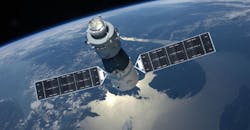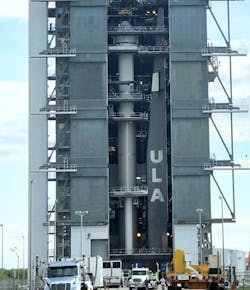Starliner is Readied for Flight to Space Station
The CST-100 Starliner “shuttlecraft” developed by Boeing for moving astronauts and equipment to and from Earth and the low-earth-orbit (LEO) International Space Station (ISS) is one step closer to its first flight. It is now connected to the United Launch Alliance (ULA) Atlas V rocket that will send it on its way to the ISS. The flight is scheduled for Dec. 17 from Space Launch Complex-41 at Cape Canaveral Air Force Station, Fla. Boeing built and maintains the ISS for NASA. The reusable Starliner was developed in collaboration with NASA’s Commercial Crew Program.
The CST-100 Starliner represents an evolution of the Space Shuttle, designed to ferry astronauts and equipment to and from the ISS. (Courtesy: Boeing)
The combination of the Starliner spacecraft and the Atlas V rocket is 172 ft. (52 m) tall. The Atlas V rocket, which has completed 80 successful launches since 2002, generates about 1.6 million lbs. of thrust at launch. “Our team successfully completed the transport and mating of two incredible vehicles,” said Boeing Starliner vice president John Mulholland. “Safety and mission success come down to ensuring the integrity of every step along the way. I could not be more proud of the Starliner team and the dedication put forward to get here today.”
This first Starliner test flight will carry only cargo for a docked stay of a few days at the ISS. The second test flight will involve a different spacecraft and will take Boeing astronaut Chris Ferguson as well as NASA astronauts Mike Fincke and Nicole Mann to the ISS for a longer mission.
About the Author
Jack Browne
Technical Contributor
Jack Browne, Technical Contributor, has worked in technical publishing for over 30 years. He managed the content and production of three technical journals while at the American Institute of Physics, including Medical Physics and the Journal of Vacuum Science & Technology. He has been a Publisher and Editor for Penton Media, started the firm’s Wireless Symposium & Exhibition trade show in 1993, and currently serves as Technical Contributor for that company's Microwaves & RF magazine. Browne, who holds a BS in Mathematics from City College of New York and BA degrees in English and Philosophy from Fordham University, is a member of the IEEE.


